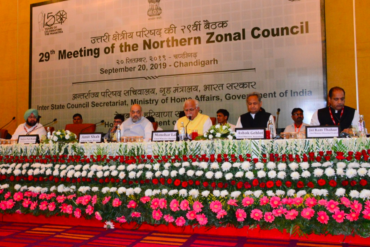Washington, April 5 (IANS) Terror group Lashkar-e-Taiba (LeT) recruits from Pakistan’s elite, contradicting “a lingering belief that Islamist terrorists are the product of low or no education or are produced in madrassahs”, a media report said Friday quoting an exhaustive study.
Lashkar is “a group whose well-educated recruits defy the idea that poverty and ignorance breed extremism. A group whose fighters include relatives of a politician, a senior army officer and a director of Pakistan’s Atomic Energy Commission”, said ProPublica, an investigative news site, citing the study.
The study released by the Combating Terrorism Center at the US Military Academy in West Point helps explain why Pakistan has resisted international pressure to crack down on Lashkar after it slaughtered 166 people in Mumbai in 2008, it said.
The findings are based on 917 biographies of LeT fighters killed in combat.
They illuminate “Lashkar’s integration into Pakistani society, how embedded they are”, said co-author Don Rassler, the director of a research programme at the centre that studies primary source materials.
“They have become an institution,” Rassler was quoted as saying.
The 56-page report “The Fighters of Lashkar-e-Taiba: Recruitment, Training, Deployment and Death” refrains from policy suggestions, but there are implications for US counterterror strategy.
Lashkar’s popularity and clout defy conventional approaches to fighting extremism, said co-author Christine Fair, a Pakistan expert at Georgetown University.
“When you have an organization that enjoys such a degree of open support, there are no options for US policy other than counterintelligence, law enforcement and counter-terrorism targeting,” Fair said.
The study says that recruits often become holy warriors with the help of their families, which admire Lashkar’s military exploits in India and Afghanistan and its nationalism and social service activities at home.
Most recruits joined at about age 17 and died at about 21, generally in India or Afghanistan.
Their backgrounds contradict “a lingering belief in the policy community that Islamist terrorists are the product of low or no education or are produced in Pakistan’s madrassas”, the report said.
In fact, the fighters had higher levels of secular education compared to the generally low average for Pakistani men.
Relatively few studied at religious schools known as madrassahs. They joined Lashkar because they wanted more meaningful lives, admired its anti-corruption image and felt an obligation to help fellow Muslims, the study said.
“These are some of Pakistan’s best and brightest and they are not being used in the labor market, they are being deployed in the militant market,” Fair said.
“It’s a myth that poverty and madrassahs create terrorism, and that we can buy our way out of it with US aid.”
At least 18 fighters who were killed had immediate family members who served in Pakistan’s armed forces.
Although most recruits were working or lower middle-class, some “had connections to elite Pakistani institutions and Pakistani religious leaders and politicians”.
The study cites Abdul Qasim Muhammad Asghar, son of the president of the Pakistan Muslim League’s labour wing in Islamabad and Rawalpindi.
Another case: a fighter known by the nom de guerre of Abdul Razzaq Abu Abdullah. His 2003 obituary describes his maternal uncle as “a director of Pakistan’s Atomic Energy Commission”.
The opinions, beliefs and viewpoints expressed by authors, news service providers on this page do not necessarily reflect the opinions, beliefs and viewpoints of Hill Post. Any views or opinions are not intended to malign any religion, ethnic group, club, organization, company, or individual.
Hill Post makes no representations as to the accuracy or completeness of any information on this site page.



